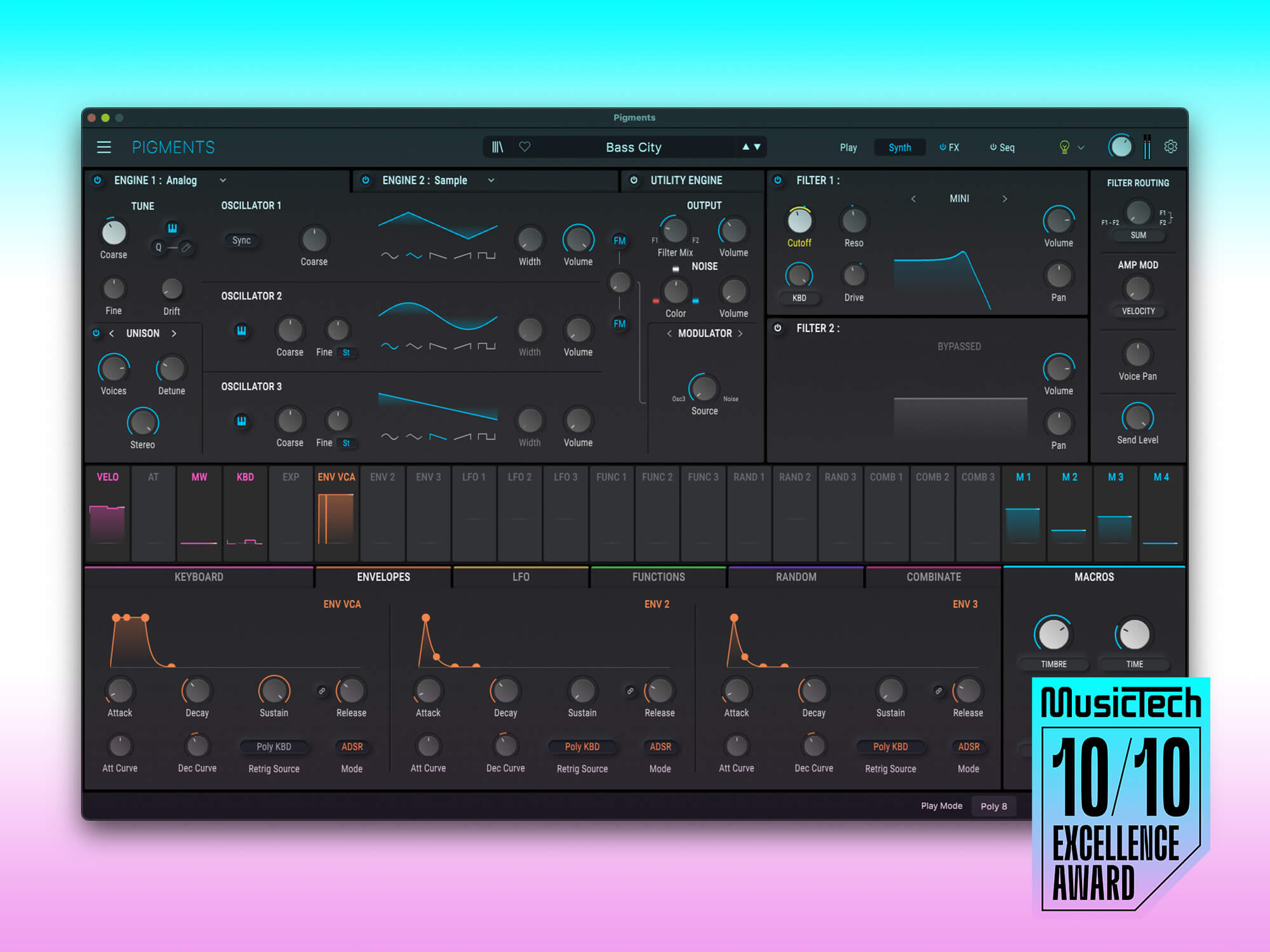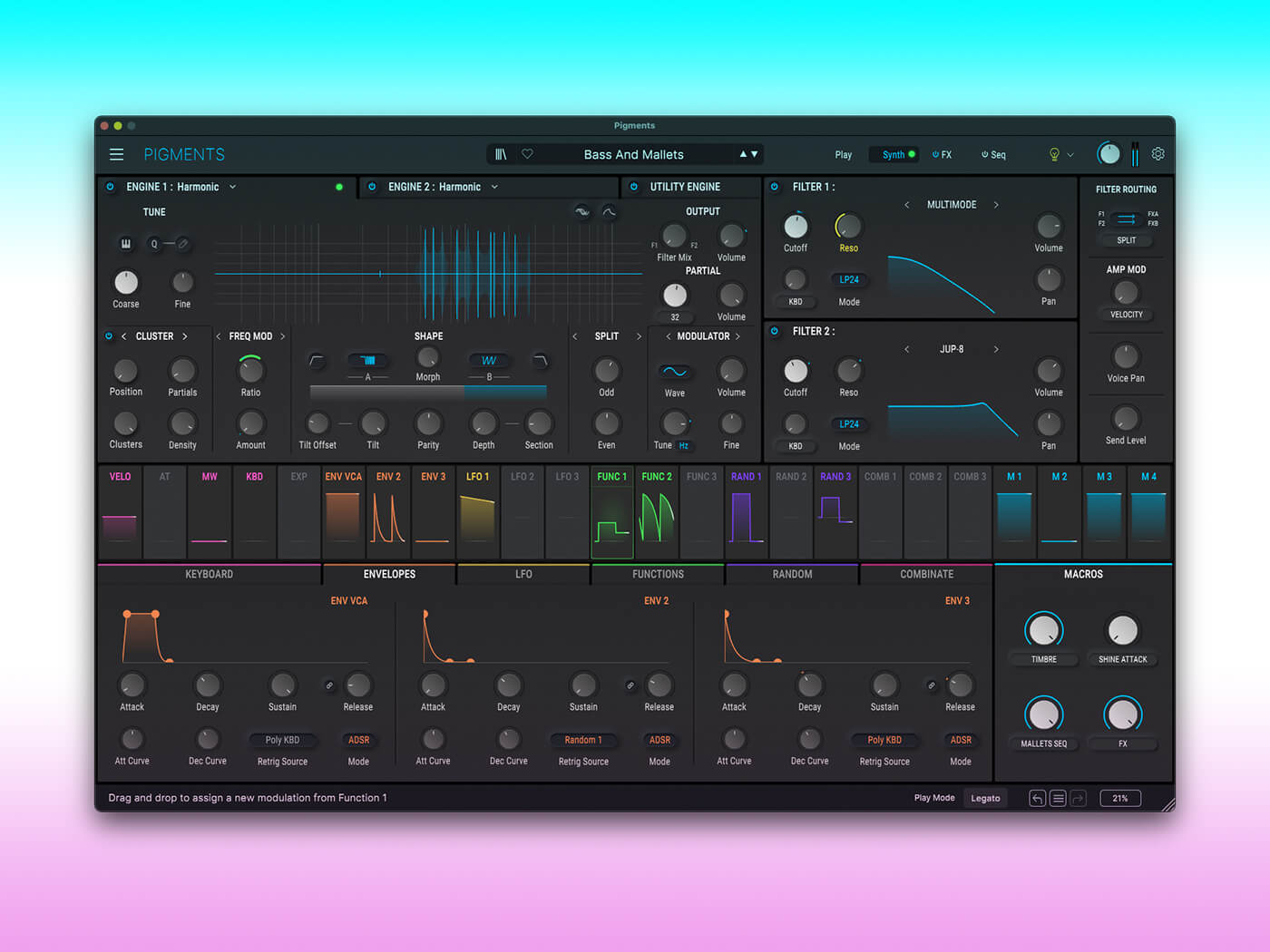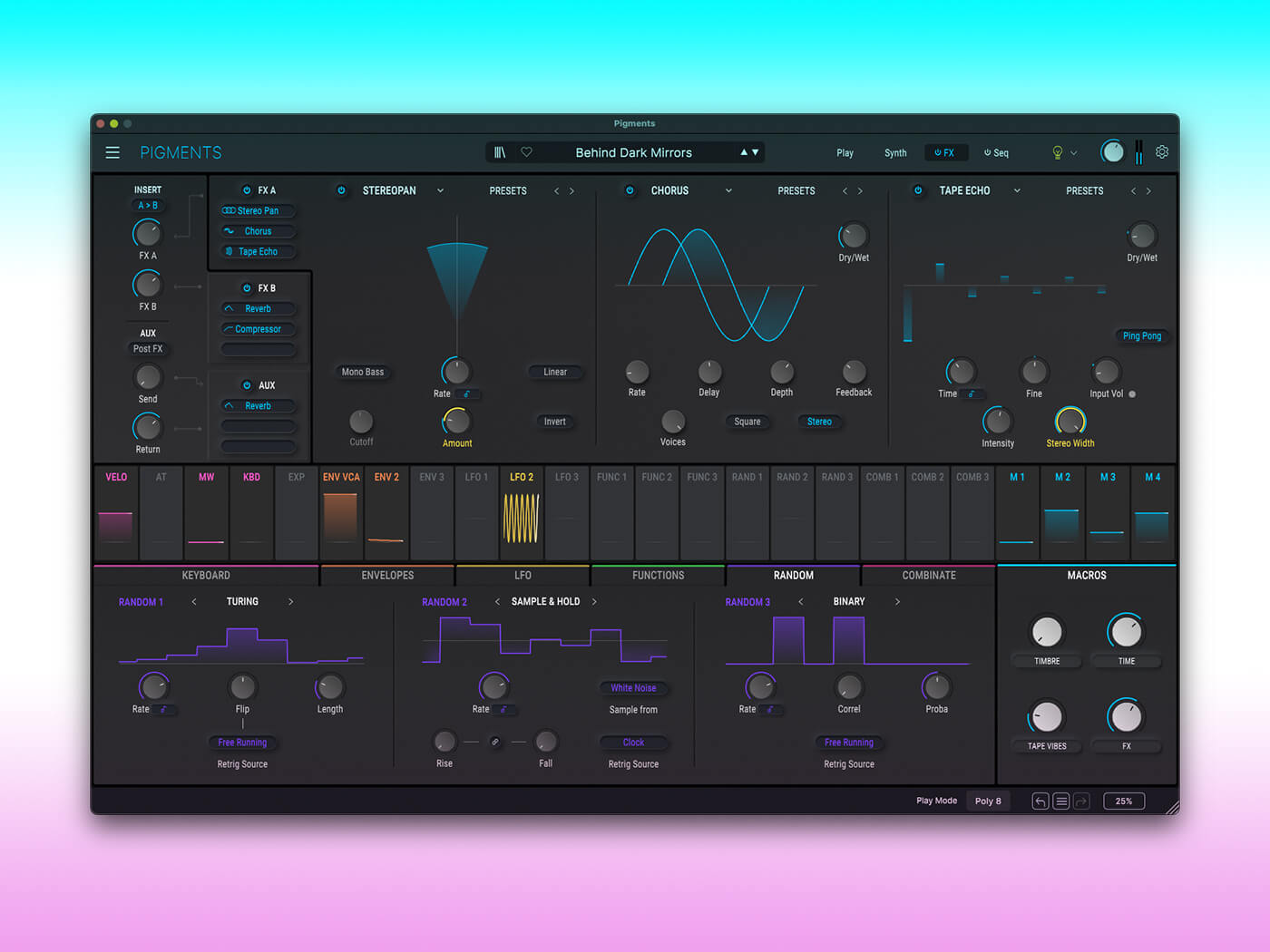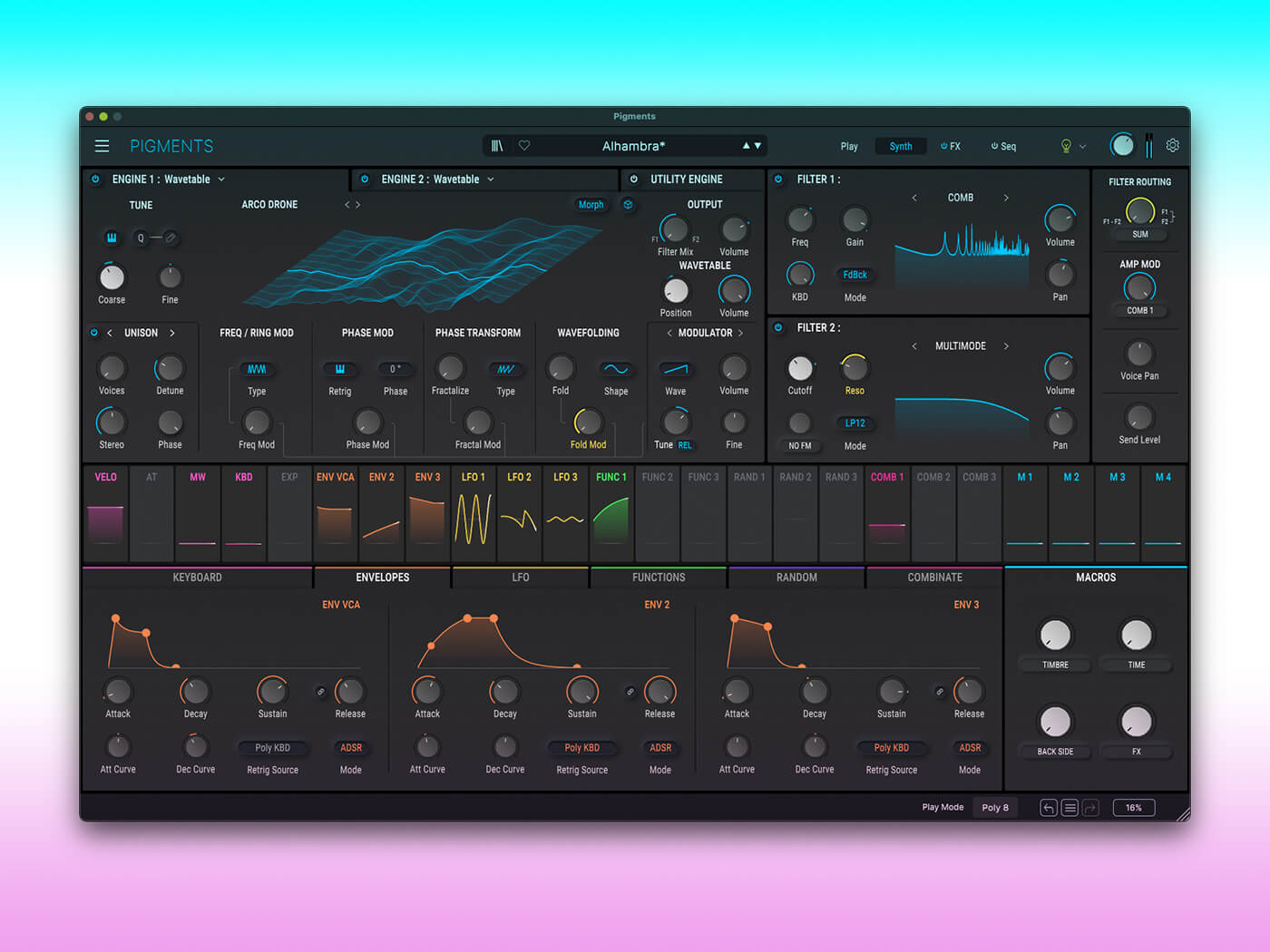Arturia Pigments 5 – still one of the best soft synths for sound design
Modelling so many iconic instruments has taught Arturia what it takes to make a great synthesizer, so it’s used that knowledge to create something even better

Arturia Pigments 5
Review Overview
Our rating
10
Our verdict
⊕ Phenomenal sound design flexibility
⊕ Vast library of presets, wavetables and samples
⊕ Easy drag-and-drop mapping of modulators and controllers
⊕ Attractive user interface with intuitive visualisations
⊕ Powerful arpeggiator/sequencer
⊖ Enjoys chowing down on your CPU cycles
€199 (option to spread payment across two, three or four monthly payments), free update from Pigments 4, arturia.com
Arturia’s growth over the last couple of decades — from small-scale software developer to music technology behemoth has been remarkable — and has given us a host of hardware and software music-making tools that many producers find essential. A prime example of this, for us, is Pigments, arguably one of the most versatile and powerful software synthesizers ever created.
- READ MORE: Is DJ Studio the perfect DAW for DJs?
Pigments 5 grabs the attention as soon as you play any of the presets from its impressively vast collection. Whether basses, leads, pads, sound effects, or any other flavour of sound, Pigments comes packed with stunning, inspirational patches that thunder, scream, sing and dance their way into your ears.
Such remarkable creative breadth and depth would be impossible were it not for Pigments’ adaptable synthesis engine. This is immediately familiar and welcoming, following a tried-and-tested subtractive synthesis architecture and layout, the synth’s flexibility emerging from the modular nature of each stage.

Pigments 5’s sound engines
The oscillator stage is made up of three Engines. One of these, the Utility Engine, is fixed and always provides a pair of flexible noise generators with an array of noise patterns, a basic analogue-style oscillator, and an audio input that can replace the second noise generator, letting you feed external signals into the instrument.
The remaining pair of Engines are where the real action is at. In these, you can load any of four oscillator models, each offering a different character, thanks to their methods of waveform generation.
The first oscillator model, Analogue, provides a classic three-oscillator setup with more than a hint of Minimoog about it (although, unlike a Minimoog, Pigments can operate polyphonically). There’s a standard set of analogue waveforms, hard-syncing between the first two oscillators, and a noise generator with variable colour. Noise can be mixed with the engine’s output, as expected, but can also be blended with Oscillator 3 and used as a frequency modulation source for the first two oscillators. The model’s convincing analogue sound can even be enhanced by dialling in some analogue-style tuning drift.
The Wavetable model comes with a large collection of wavetables and lets you import custom ones. The model can traverse, warp and reshape your chosen wavetable in all sorts of ways, providing a near-limitless palette of waveforms and noises.
Pigments’ Sample model hosts up to six samples simultaneously, taken from the large internal library or imported from your own. Samples can be assigned to key and/or velocity maps, chosen randomly, cycled in a round-robin pattern, or chosen via a modulator or controller. Better still, alongside traditional sample triggering and looping, the model also includes a granular mode, turning any sample into an endlessly mineable source of unique timbres.
The final model, Harmonic, generates sound using additive synthesis principles but, unlike an actual additive synthesizer, it operates in a way that’s manageable and controllable. That’s not to say it’s straightforward — Harmonic is Pigments’ most complicated model — but its mysteries do yield to exploration and experimentation, and allow the creation of a wide range of timbres that are markedly different to those produced by the synth’s other oscillator models.

The flexible filters and effects of Pigments 5
Each oscillator engine can mix and balance its output between two filter slots, and these slots can load any one of eleven filter models. There’s a standard multimode affair, and a clutch of more specialised filters such as comb, low-pass gate and formant. Alongside these are a range of filters modelled on iconic filter circuits such from the likes of Moog (Minimoog), Korg (MS-20) and Roland (Jupiter 8).
Rather than give a binary choice on whether the filters are connected in series or parallel, Pigments allows you to blend between these two methods. Alternatively, the filters can be split entirely, with each routing its output to the subsequent effects section as a discrete signal. This all makes for tremendous versatility in how raw waveforms are shaped.
The modular ethos continues into the effects section, which provides two insert chains that receive the output from the filters, and a third auxiliary chain that operates as a send/return loop following the insert chains. Each chain is made up of three slots with a choice of 18 high-quality effects, many taken from other Arturia plugins. As with everything else in Pigments, the routing of the effects chains is very flexible, maximising the creative options available.
Topping things off is Pigments’ advanced arpeggiator/sequencer, which has had a couple of tweaks in this new version. The sequencer is better than many standalone pattern sequencers — ideal for generative music thanks to its polyrhythms, probability, and intelligent pitch quantisation and harmonisation, all of which can be triggered and transposed by the notes you play.
As well as driving Pigments, the sequencer’s MIDI output can be routed to other synths, making it a seriously powerful production tool.

Is Pigments 5 the best soft synth?
Bringing life to Pigments’ sound is a large collection of modulators – three each of envelope, LFO, function curve, and random generator, blends of which can be created using the three combinators. There’s extensive real-time control too, with the usual suspects of velocity, mod wheel, aftertouch and key tracking joined by MPE and pitch/slide support, and four macro controllers that can themselves be controlled by other modulators.
Managing this stack of modulation sources is a breeze, with each having a panel that visualises its activity and from where you can drag-and-drop the source onto any destination parameter, including effects and sequencer parameters.
This elegance exemplifies much of Pigments’ design, as despite its ludicrous adaptability the instrument is easy to navigate and operate for anybody familiar with subtractive synthesis. Controls are laid out logically and sensibly, visualisations are intuitive and clear, and interactions are obvious and consistent. And, let’s face it, the instrument looks good, inviting you to dive in and start playing.
All of this synthesis power comes at the cost of CPU power, but this does depend on how many of the various synth and processor slots are in use, and has been improved in this latest edition. The other updates in this new version are welcome too. Minor though they are, they’re more than enough to keep Pigments firmly pegged as one of our absolute favourite synths.

Key features
- Plugin and standalone instrument for Windows and macOS
- Monophonic or up to 32-voice polyphonic
- MPE (MIDI Polyphonic Expression) support
- Accessibility features
- Micro tuning
- Integrated tutorial system
- Oscillator models: Analogue; Wavetable; Sampler; Harmonic
- Filter models: MultiMode; MS-20; SEM; Matrix 12; Jup-8; Mini; Surgeon; Comb; Phaser; Formant; Low Pass Gate
- Effects: Delay; Tape Echo; PS Delay; Reverb; Shimmer; Compressor; Multiband Dynamics; Multi Filter; Parametric EQ; Distortion; Bit Crusher; Super Unison; Chorus; Chorus JUN-6; Flanger; BL-20 Flanger; Phaser; Stereo Pan